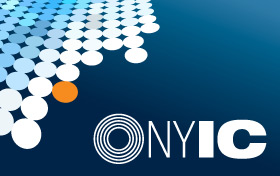NEW YORK—The Federal Reserve Bank of New York’s Center for Microeconomic Data today issued its Quarterly Report on Household Debt and Credit. The report shows total household debt increased by $185 billion (1%) in Q2 2025, to $18.39 trillion. The report is based on data from the New York Fed’s nationally representative Consumer Credit Panel. It includes a one-page summary of key takeaways and their supporting data points.
The New York Fed also issued an accompanying Liberty Street Economics blog post analyzing borrower trends in the mortgage market across balances, delinquency rates, credit scores, and geography.
“This quarter’s flow of household debt into serious delinquency was mixed across debt types, with credit card and auto loans holding steady, student loans continuing to rise, and mortgages edging up slightly,” said Joelle Scally, Economic Policy Advisor at the New York Fed. “Despite the recent uptick in mortgage delinquency, overall mortgage performance remains strong by historical standards.”
Mortgage balances grew by $131 billion in the second quarter and totaled $12.94 trillion at the end of June 2025. Credit card balances rose by $27 billion from the previous quarter and stood at $1.21 trillion. Auto loan balances also increased by $13 billion and totaled $1.66 trillion. HELOC balances rose by $9 billion to $411 billion, representing the thirteenth consecutive quarterly increase. Student loan balances edged up by $7 billion and stood at $1.64 trillion. In total, non-housing balances rose by $45 billion, a 0.9% increase from Q1 2025.
The pace of mortgage originations increased slightly, with $458 billion newly originated mortgages in Q2 2025. There were $188 billion in new auto loans and leases appearing on credit reports during the second quarter, an increase from the $166 billion observed in the first quarter of 2025. Aggregate limits on credit card accounts continued to rise by $78 billion, representing a 1.5% increase from the previous quarter.
Aggregate delinquency rates remained elevated in the second quarter, with 4.4% of outstanding debt in some stage of delinquency. Transition into early delinquency held steady for nearly all debt types except for student loans. Student loans saw another uptick in the rate at which balances went from current to delinquent due to the resumption of reporting of delinquent student loans. Transitions into serious delinquency were mixed across debt types: auto loans and credit card debt were largely stable, mortgages and HELOCs edged up slightly, and student loans rose sharply.
Student Loans
- Outstanding student loan debt stood at $1.64 trillion in Q2 2025.
- Missed federal student loan payments that were not previously reported to credit bureaus between Q2 2020 and Q4 2024 are now appearing in credit reports. Consequently, student loan delinquency rates continued to rise.
- In Q2 2025, 10.2% of aggregate student debt was reported 90+ days delinquent.
Housing Debt
- Additional resources on the housing and mortgage market can be found at the Center for Microeconomic Data’s housing page . The page includes previous blogs on housing, related publications, and the Survey of Consumer Expectations Housing Survey.
Household Debt and Credit Developments as of Q2 2025
| Category | Quarterly Change* (Billions $) |
Annual Change** (Billions $) | Total As of Q2 2025 (Trillions $) |
| Mortgage Debt | (+) $131 | (+) $416 | $12.94 |
| Home Equity Line of Credit | (+) $9 | (+) $31 | $0.411 |
| Student Debt | (+) $7 | (+) $53 | $1.638 |
| Auto Debt | (+) $13 | (+) $29 | $1.655 |
| Credit Card Debt | (+) $27 | (+) $67 | $1.209 |
| Other | (-) $2 | (-) $4 | $0.540 |
| Total Debt | (+) $185 | (+) $592 | $18.388 |
*Change from Q1 2025 to Q2 2025
** Change from Q2 2024 to Q2 2025
Flow into Serious Delinquency (90 days or more delinquent)
| Category1 | Q2 2024 | Q2 2025 |
| Mortgage Debt | 0.95% | 1.29% |
| Home Equity Line of Credit | 0.51% | 1.15% |
| Student Loan Debt | 0.80% | 12.88% |
| Auto Loan Debt | 2.88% | 2.93% |
| Credit Card Debt | 7.18% | 6.93% |
| Other | 5.42% | 5.42% |
| ALL | 1.59% | 2.91% |
About the Report
The Federal Reserve Bank of New York’s Household Debt and Credit Report provides unique data and insight into the credit conditions and activity of U.S. consumers. Based on data from the New York Fed’s Consumer Credit Panel , a nationally representative sample drawn from anonymized Equifax credit data, the report provides a quarterly snapshot of household trends in borrowing and indebtedness, including data about mortgages, student loans, credit cards, auto loans, and delinquencies. The report aims to help community groups, small businesses, state and local governments, and the public to better understand, monitor, and respond to trends in borrowing and indebtedness at the household level. Sections of the report are presented as interactive graphs on the New York Fed’s Household Debt and Credit Report webpage and the full report is available for download.










